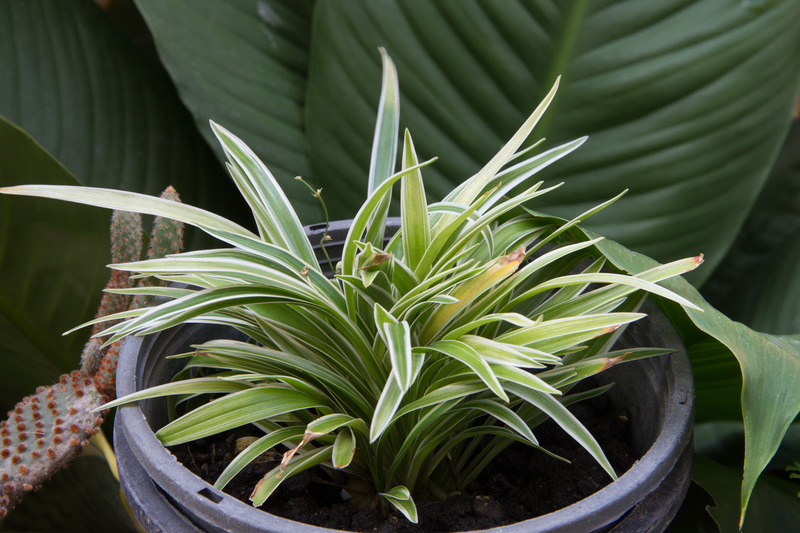Expert Tips for Thriving Orchid Care
Posted on 03/09/2025
Expert Tips for Thriving Orchid Care
Orchids are among the most stunning and exotic plants, admired for their intricate blooms and captivating colors. However, despite their beauty, many growers find themselves struggling to keep their orchids healthy and thriving. Whether you're a curious beginner or an orchid enthusiast looking for advanced techniques, this comprehensive guide will reveal essential expert tips for thriving orchid care, helping you cultivate lush, blooming plants that last for years.

Understanding Orchids: Types and Their Unique Needs
There are over 25,000 species of orchids, each with distinctive requirements. While they all share a love for humidity and indirect light, benefiting from individualized care is crucial for your orchid's long-term health.
Most Popular Orchid Varieties
- Phalaenopsis (Moth Orchid): Easy-care and relentless bloomers, perfect for beginners.
- Cattleya: Known for large, fragrant flowers; prefers bright, indirect sunlight.
- Dendrobium: Robust, tolerant of a range of conditions, best for intermediate growers.
- Oncidium (Dancing Lady): Favored for their abundant, brilliant blooms.
- Vanda: Dramatic flowers, enjoy a lot of light and humidity.
Key Elements for Successful Orchid Growth
The Right Light: Vital for Orchid Health
Proper lighting is crucial for orchid care success. Insufficient light often results in weak plants with few flowers. On the other hand, too much direct sun can scorch orchid leaves.
- Ideal Placement: East or west-facing windows with filtered light are best.
- Signs of Adequate Light: Leaves should be bright green--dark green means too little light, yellowish or reddish tinge means too much.
- Supplemental Lighting: Grow lights can help if natural light is limited, especially in winter months.
Mastering Watering Techniques
Overwatering is the most common reason for orchid struggles. Orchids prefer a cycle of moist and dry periods, mimicking their natural rainforest habitats.
- Watering Frequency: Water when the potting medium feels dry to the touch--typically once a week.
- Type of Water: Use room-temperature, distilled, or rainwater. Avoid softened or highly chlorinated tap water.
- Watering Method: Water the plant thoroughly, allowing excess to drain. Never let roots sit in water as this leads to root rot.
Humidity and Temperature: Mimicking Natural Conditions
Orchids thrive in high humidity. Indoor environments, especially in winter, can be challenging unless humidity is increased appropriately.
- Humidity Levels: Target 50-70% humidity. Use trays with pebbles and water, or a humidifier, especially during dry months.
- Air Circulation: Good airflow prevents fungal issues--small fans and open windows (when temperatures allow) are beneficial.
- Temperature Range: Most orchids prefer daytime temps between 65-75?F (18-24?C) and slightly cooler nights.
Potting Media and Repotting Essentials
The right potting medium supports healthy roots. Orchids need special media, such as bark, sphagnum moss, or proprietary orchid mixes, rather than standard soil.
- Repotting Frequency: Every 1-2 years, or when the medium decomposes.
- Signs It's Time to Repot: Roots spilling over the pot edge, reduced blooming, or medium breaking down.
- Choosing Containers: Use clear plastic pots for easy monitoring of roots and dryness, with adequate drainage holes.
Feeding Your Orchid: Fertilizer Tips for Optimal Blooms
Feeding is essential for healthy orchid care, but orchids are sensitive to strong fertilizers.
- Type of Fertilizer: Use a balanced, water-soluble fertilizer labeled for orchids (e.g., 20-20-20).
- Frequency: Fertilize every other week during active growth (usually spring and summer), and reduce in fall and winter.
- Method: Dilute fertilizer to half the recommended strength. Flush the pot with pure water monthly to prevent salt buildup.
Encouraging Rebloom: How to Trigger Flowering
Many orchid enthusiasts wonder how to make their plants flower again after a bloom cycle.
- Temperature Drop: Lower nighttime temperatures by 10-15?F for several weeks--this often stimulates new flower spikes.
- Maintain Humidity & Light: Continue with steady light and moisture during this period.
- Pruning: After blooms fade, prune the flower spike just above the node for types like Phalaenopsis; other varieties may require complete removal of spent stems.
Common Problems and Expert Solutions
Yellow Leaves, Brown Spots, & Root Rot
Orchids' sensitivity can lead to a variety of issues, but with proactive attention, most problems are easy to manage.
- Yellow Leaves: Usually due to overwatering or excessive light. Assess watering schedule and relocate if necessary.
- Brown Leaf Tips or Spots: Often a result of low humidity, salt buildup, or fungal infection. Increase humidity, flush pots, and remove affected leaves.
- Root Rot: Caused by waterlogged media. Repot immediately into fresh medium, trim away mushy or dark roots, and adjust watering practices.
Pest Control: Keeping Orchids Free of Bugs
- Common Pests: Aphids, scale insects, spider mites, and mealybugs can be troublesome.
- Action Steps: Rinse plants in lukewarm water, treat with insecticidal soap or neem oil, and ensure good air circulation.
- Preventative Measures: Inspect new plants before introducing to your collection and quarantine if necessary.
Best Practices for Disease-Free Orchids
- Sanitize Tools: Clean shears and pots with rubbing alcohol before use.
- Remove Dead Growth: Prune dying leaves and faded flowers promptly.
- Avoid Standing Water: Prevent moisture from collecting in leaf axils, especially after misting or watering.
Seasonal Orchid Care: Adjusting to Changing Conditions
Spring & Summer Orchid Care
- Increase light and humidity: As days lengthen, orchids enter active growth. Adjust watering and fertilization accordingly.
- Monitor for pests: Warm, humid weather can favor infestations--inspect regularly.
Fall & Winter Orchid Care
- Reduce watering: Most orchids need less water as they enter dormancy or slow growth.
- Maintain humidity: Indoor heating can dry the air--use trays and humidifiers.
- Encourage reblooming: Provide cooler nighttime temperatures for varieties that need a seasonal trigger.
Advanced Orchid Care: Going Beyond the Basics
Propagation Techniques
Expanding your orchid collection can be deeply rewarding. Successful propagation involves:
- Keiki (Baby Orchid) Growth: Some orchids naturally produce plantlets--separate and repot once roots reach 1-2 inches.
- Division: Once mature, many orchids can be split between natural pseudobulb clusters. Always use sterilized tools to prevent disease.
Mounting Orchids for Unique Displays
Epiphytic orchids (such as many Cattleya and Dendrobium types) naturally grow on trees in the wild. You can mount these orchids on bark pieces, wood planks, or even cork, recreating natural growth patterns while adding a striking display to your botanical collection.
Participating in Orchid Shows and Societies
- Join a Local Orchid Society: Benefit from expert talks, hands-on workshops, and a welcoming community of fellow growers.
- Orchid Shows and Competitions: Showcase your prized plants, receive helpful feedback from judges, and discover new varieties.

Frequently Asked Questions
How often should I water my orchid?
Water every 7-10 days, depending on the potting medium, temperature, and humidity. Always check that the top inch of the medium is dry before rewatering.
Why aren't my orchids blooming?
Possible reasons include insufficient light, lack of a cool night temperature drop, over-fertilization, or indoor climate inconsistencies. Review your care routine and adjust as needed.
Do orchids need a period of rest?
Most do, especially over winter. During rest, reduce watering and fertilization, and provide slightly cooler conditions.
Conclusion: Grow Orchids Like a Pro!
By applying these expert tips for thriving orchid care, you'll transform your growing experience, ensuring healthy, striking orchids with blooms to rival any botanical garden. Remember, patience and close observation are vital. With a little attention and the right conditions, orchids can thrive for decades, providing timeless elegance to your home.
Happy growing! May your orchids flourish and bloom like never before!

